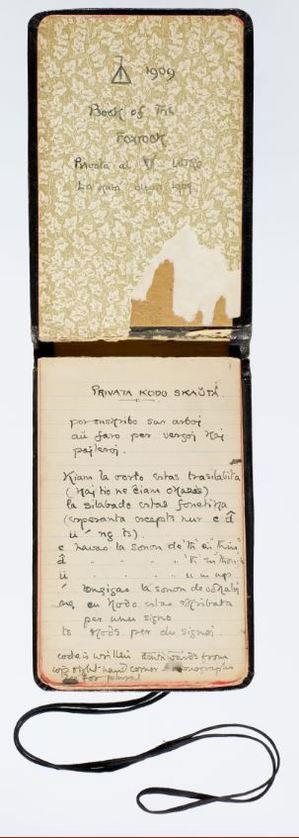Oxford Exhibit Explores History of Translation

Image: Tolkien's Book of Foxrook.
Since the beginning of recorded time, humans have tried to communicate with each other, with varying degrees of success. Sometimes ideas get contorted or just plain lost in translation, but that doesn't mean we stop trying. Opened last week at the University of Oxford's Weston Library is an exhibition that examines just how stories in all genres are transmitted across cultures through words. Babel: Adventures in Translation uses spectacular specimens culled from the university's massive collection of books, manuscripts, printed materials, and ephemera to make the case for breaking the language barrier.
"Babel explores the tension between the age-old quest for a universal language, like Latin, Esperanto, or global English today, and the face that communities continue to nurture an dretan their own languages and dialects as part of their cultural identity," explains exhibition co-curator and German literature professor Katrin Kohl. Further, she says that the exhibition "illuminates how translation builds bridges between languages and how the borderlands between languages can be fertile ground for resistance, comedy, and creativity."
Among the items on display include a 3,500- year-old bowl discovered by archaeologist Sir Arthur Evans at Knossos on the island of Crete. The piece is covered in what's referred to as Linear A, a language used by the Minoans, as of yet, remains undeciphered. Linear B, a later form of the Minoan language, was deciphered in the 1950s, and though the languages bear some resemblance to each other, not enough examples of the older language exist to fully understand it.
Also part of the show is the Codex Mendoza, a manuscript compiled in 1541 and considered one of the Bodleian Library system's most prized possessions. Using a combination of Mexica picture writing and the Mexica language, Nahuatl, and Spanish, the codex is meant as a roadmap to the newly acquired territories for Charles V, the Holy Roman Emperor and King of Spain.
An unpublished notebook (pictured above) complied by a teenaged Tolkien is also part of the show and reveals the Lord of the Rings author's lifelong obsession with invented languages. Dubbed "The Book of Foxrook," the notebook reveals Tolkien's early attempt at inventing an alphabet. Here he uses a mix of Esperanto and his own language he called the "Privata Kodo Skauta."
As we hurtle full steam ahead into the 21st century when translation services are at the tips of our smartphones, is the act of translation obsolete? The show makes the case that it is not--that employing Google Translate to ask where the bathroom is in Swedish is a far cry from the creative, laborious task of rendering and interpreting an entire document into another language.
What about the future? How can contemporary societies warn future humans of potentially dangerous sites, like nuclear waste dumps, when it's not clear that any of our current languages will exist? The question is explored here, as well as Brexit and the importance of language within a culture's identity. Ultimately, Babel aims to both explore how translation transferred information in the past and how translation continues to mold our lives today.














